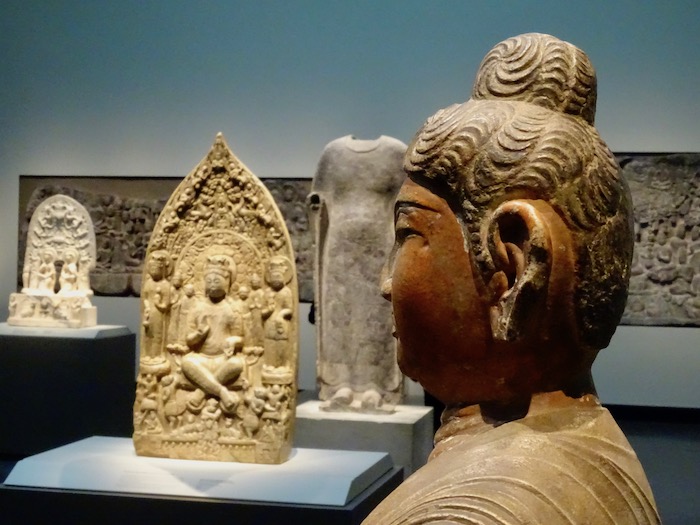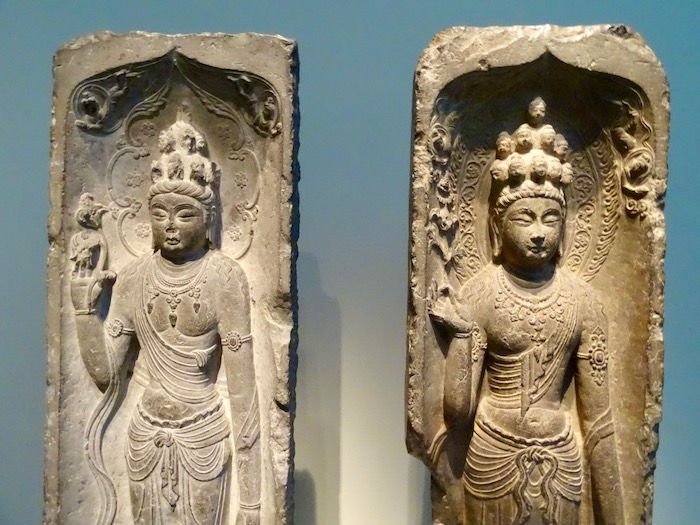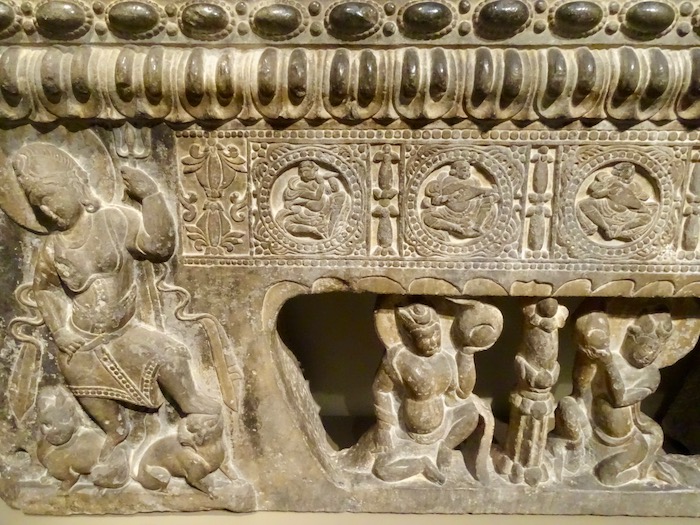In the National Mall you will find the Freer and Sackler Galleries that are part of the Smithsonian world. Visiting Washington D.C. provides access to so many free museums with different themes. Next to these galleries is the National Museum of African Art and the Smithsonian Castle. This quadrangular complex has 115.00 square feet (10,685 square meters) with 96% of it underground. A few minutes away is also the Spy Museum which is one of the few museums that is not managed by Smithsonian and has entrance fee.
Booking.com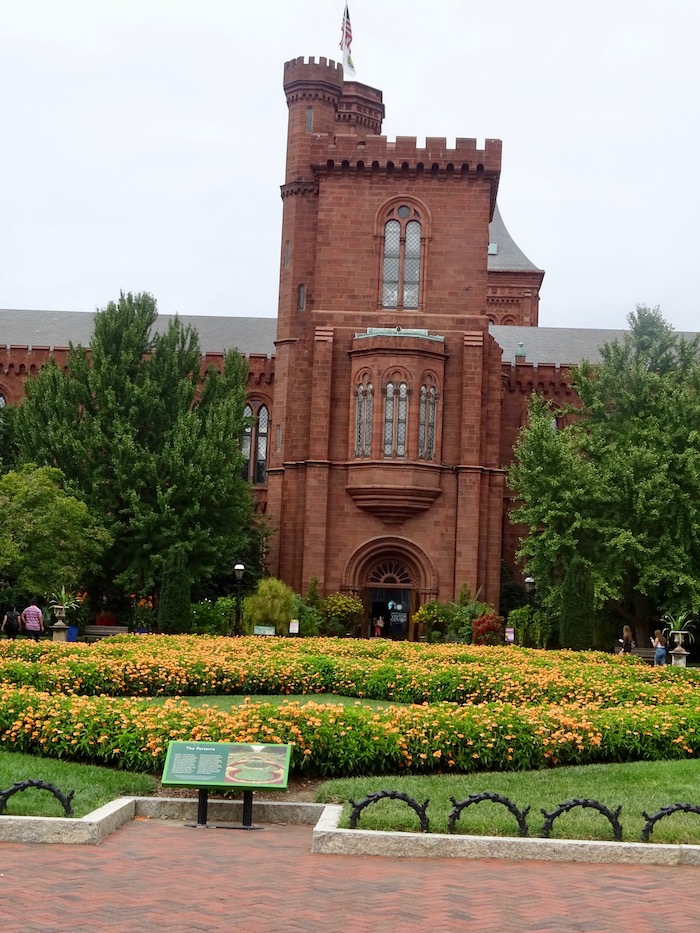

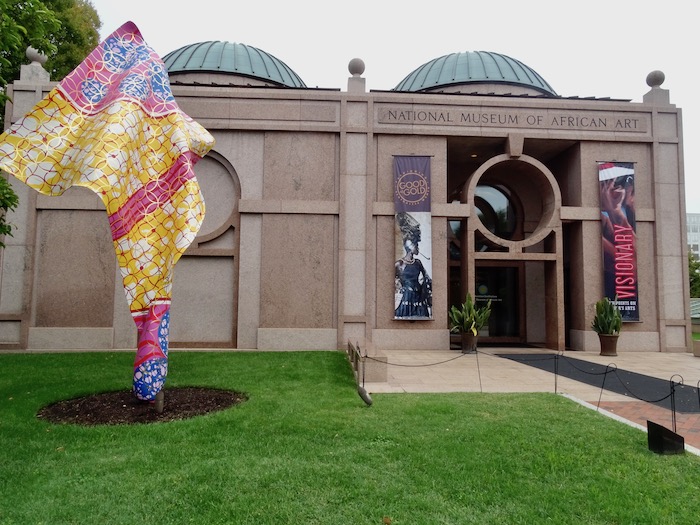
I went without knowing what to expect from the galleries, apart from the fact that they had Asian exhibits. On the Atlas Obscura website I saw that ‘the Peacock room’ was in the Freer and Sackler Galleries. I decided to spend a few hours exploring these galleries that they say it is “where Asia meets America”.
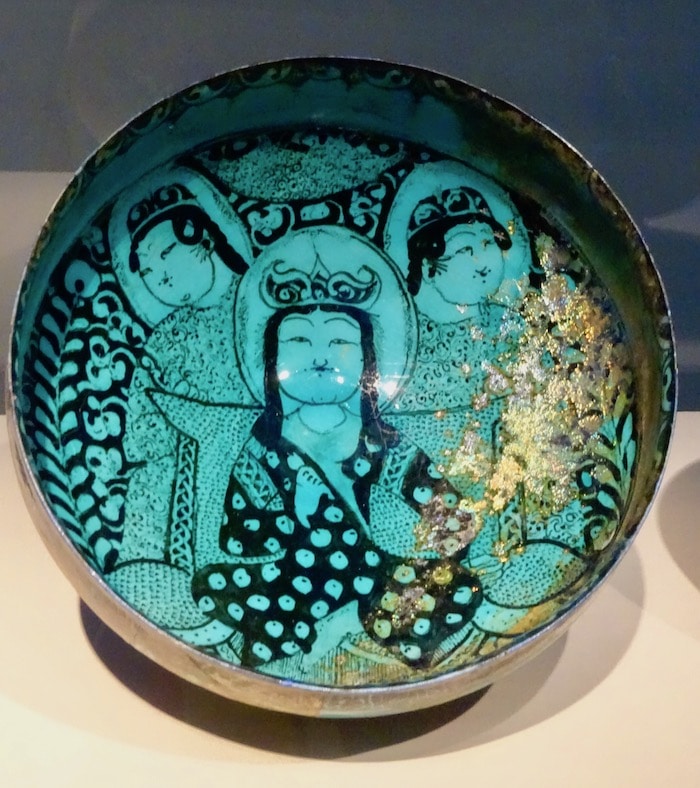
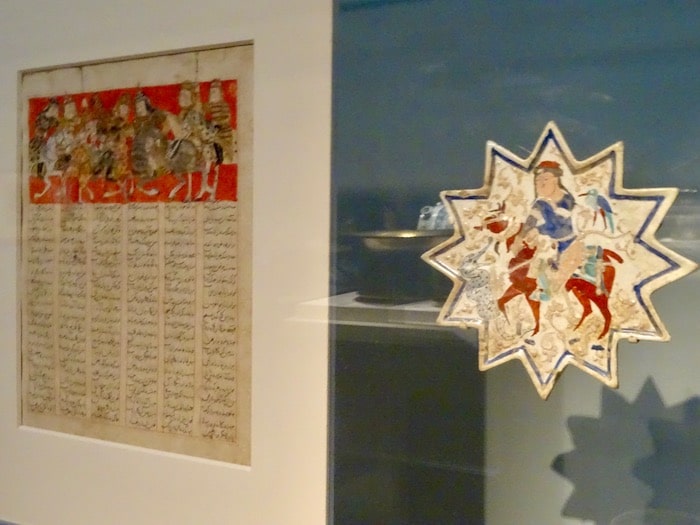

The Peacock Room
On the outside of the Freer Gallery (the Freer and Sackler Galleries are separated and connected by a tunnel) there is a sign that promotes The Peacock Room. I knew I was in the right place. This room from the 19th century is a work of art made for Frederick Leyland, a port magnate who lived in London. He wanted a place to show off his collection of Chinese porcelain.

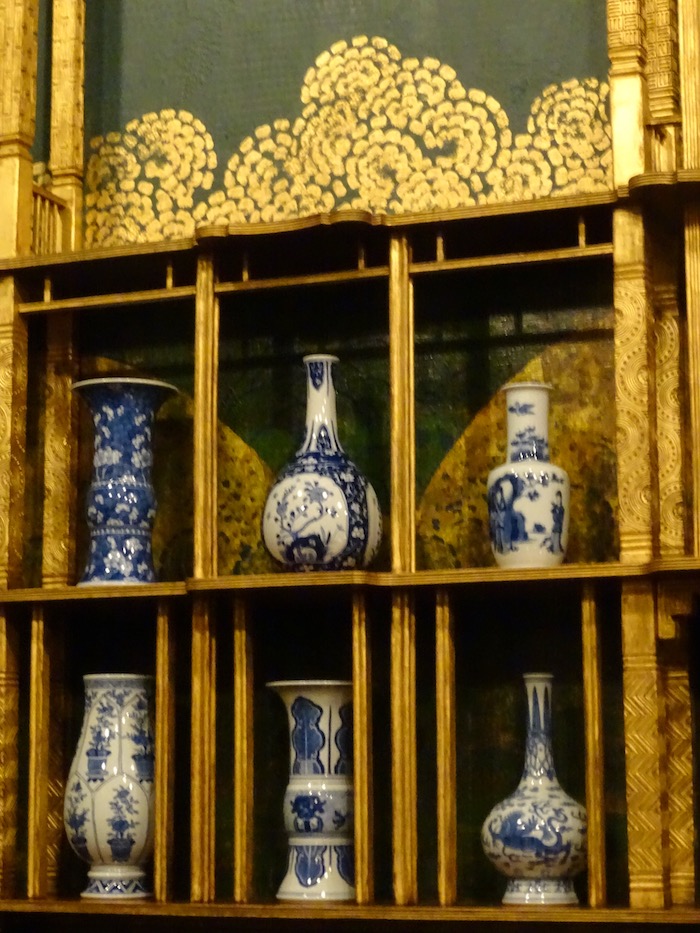
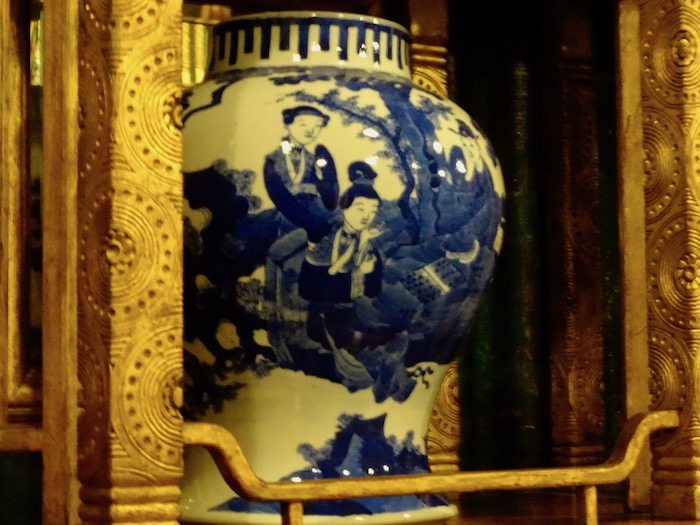
He first hired Thomas Jekyll, a British architect who originally designed the room. He set a chimney, Tudor-style ceiling, gas lamps and covered the walls with sixth century leather that had entered England as part of the dowry of Catherine of Aragon. The architect became ill and could not continue, so he hired an American artist named James McNeill Whistler. He was the one who painted the picture of the woman he called “Rose and Silver: The Princess from the Land of Porcelain“.
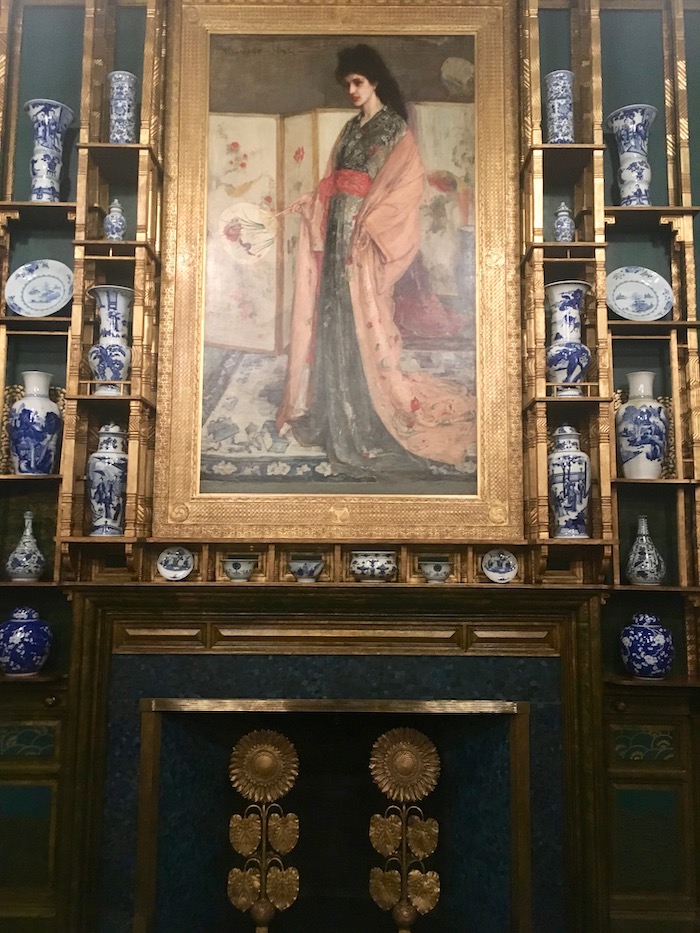

Leyland viajaba mucho y Whistler hacia lo que le daba la gana sin aprobación, consiguiendo que lo despidieran. Pero siguió entrando al cuarto y pintó dos enormes pavo reales peleando en una pared. Este cuadro lo llamó “Arte y Dinero: o, la Historia del Cuarto”.

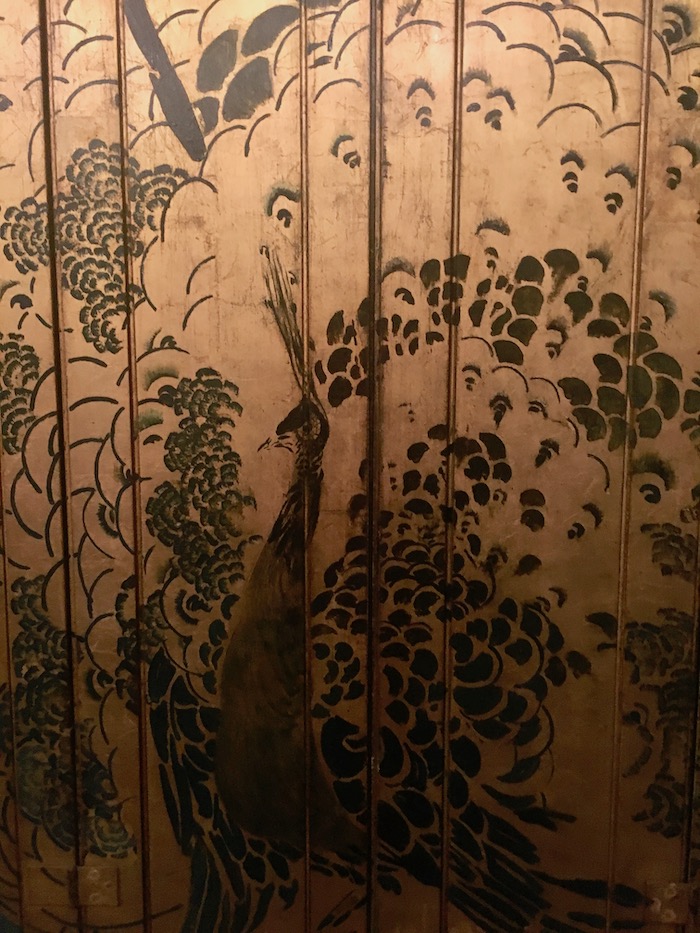
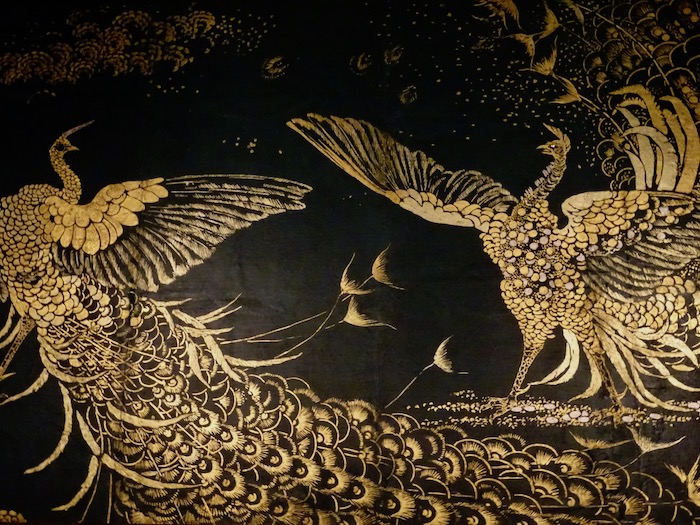
Charles Lang Freer bought the room of Leyland’s heirs in 1904 and installed it at his home in Detroit. Then he donated it to the Smithsonian along with 8,000 other works of art. On the third Thursday of each month (between noon and 5:30 p.m.) its windows open to allow light and room to air. Anyone can visit to truly appreciate the colors of the room.
Freer Art Gallery
Charles Lang Freer was born in Kingston, New York, in 1854. Upon leaving school at age 14 he began working on the railroad. In 1880 he moved to Detroit, Michigan, where he made his fortune through corporate mergers in the railroad car manufacturing industry. He made so much money that he retired at age 45. From the 1880s he began collecting American art and in 1890 he met the painter James Abbott McNeill Whistler. He got 1,300 pieces from the artist including the famous The Peacock Room. His collection of American art also includes pieces by other artists such as Thomas Dewing, Dwight Tryon and Abbott Thayer.
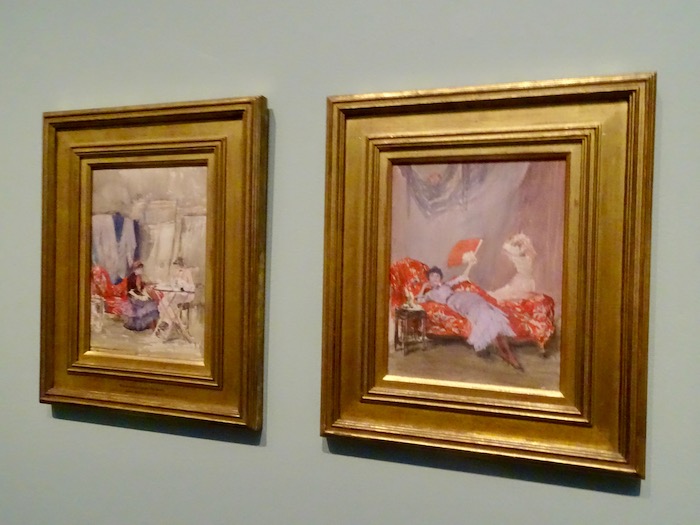
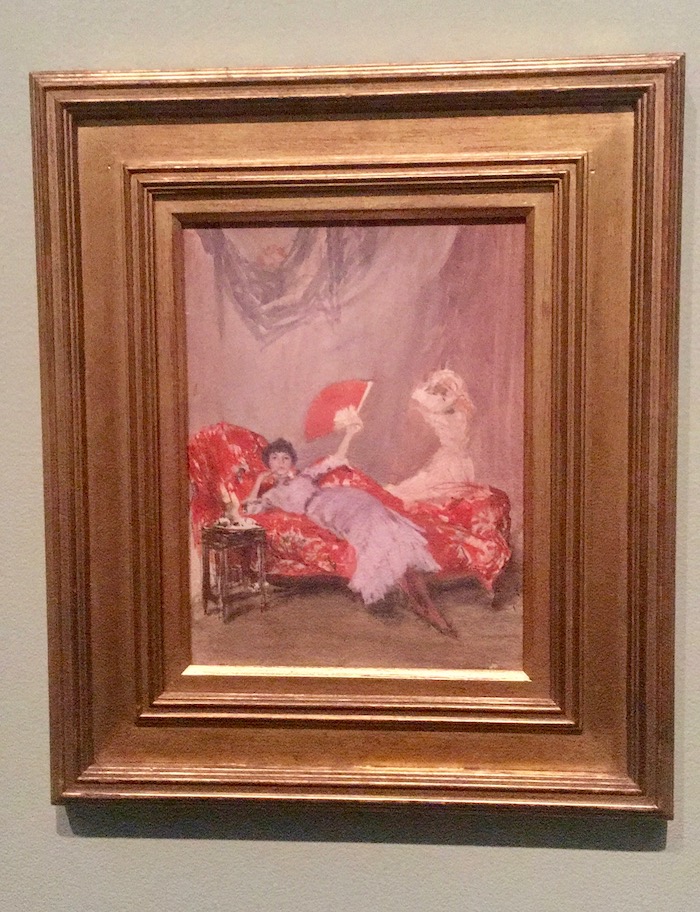
Whistler had been influenced by Japanese prints and Chinese pottery. These styles aroused curiosity in Freer who later traveled four times to China. He was fascinated by jade and began buying pieces made by the Liangzhu culture during the end of the Stone Age, at the beginning of Chinese civilization. He began acquiring this stone before any other western collector.


Gift to Smithsonian
Freer told Whistler that he wanted to help him display his collection in a city where tourists went. Charles Moore convinced Freer to exhibit his collection of 8,000 pieces of Oriental art in Washington D.C. Freer had talked with President Theodore Roosevelt to donate the collection, as well as funds to build and manage the building where it was to be exhibited. In 1906, Smithsonian accepted the gift that came with conditions, as they could not acquire more pieces of art since his collection was “perfectly complete.”
He maintained complete curatorial control until his death in 1919. Between 1906 and 1919, the collection grew from 2,500 to almost 10,000 objects. Later more gifts and purchases were added to the Asian collection.


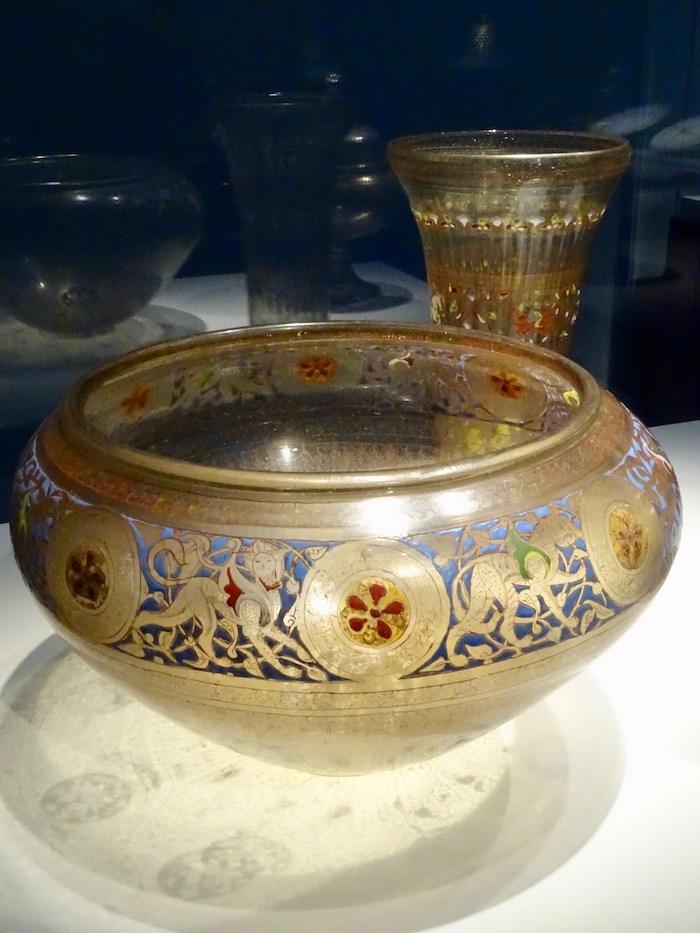
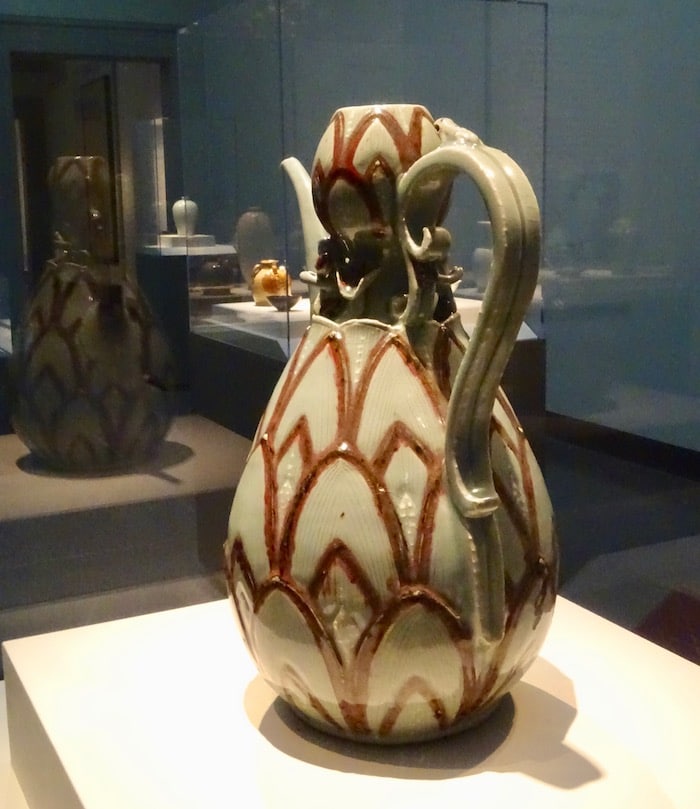
The construction of the Freer Art Gallery began in 1916, but was delayed by World War I and ended in 1921, after Freer’s death. On May 9, 1923, the Freer Art Gallery opened to the public. The building was constructed of granite in an Italian Renaissance style. It has a square in its center with plants and a fountain that is an ideal place to relax while viewing the works.
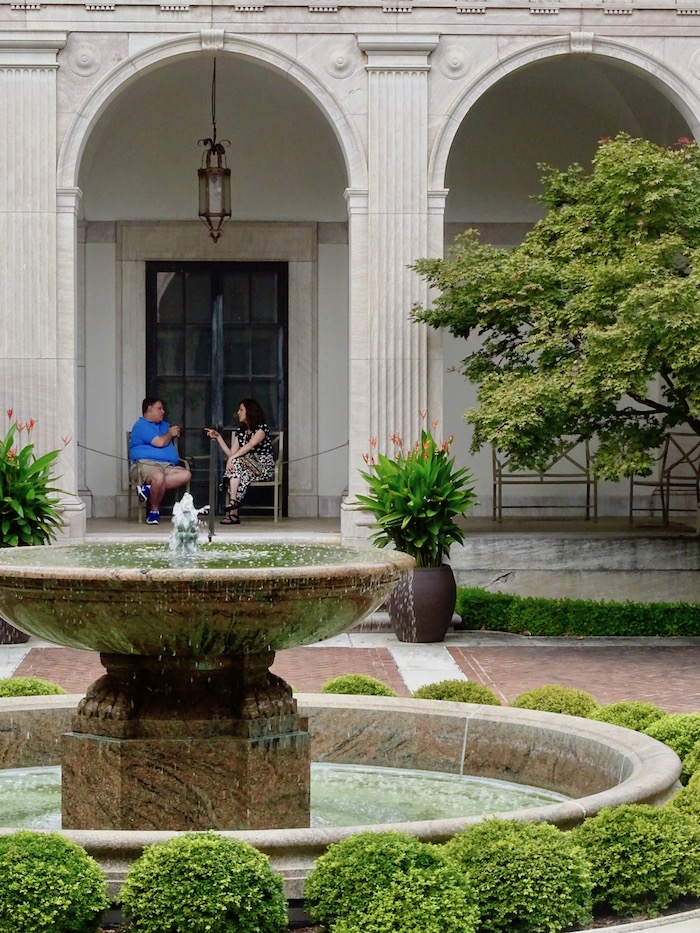
Another of Freer’s conditions was that they could not lend or request works from other institutions. But they do have exhibits that are temporary and rotating. Currently, the Freer Art Gallery has more than 26,000 works ranging from the Neolithic period to the current era, covering some 6,000 years of history. This museum was the first of Smithsonian dedicated to the fine arts. The Freer and Sackler Galleries are connected by an underground bridge. Each collection is stored separately, but facilities share administrative staff.
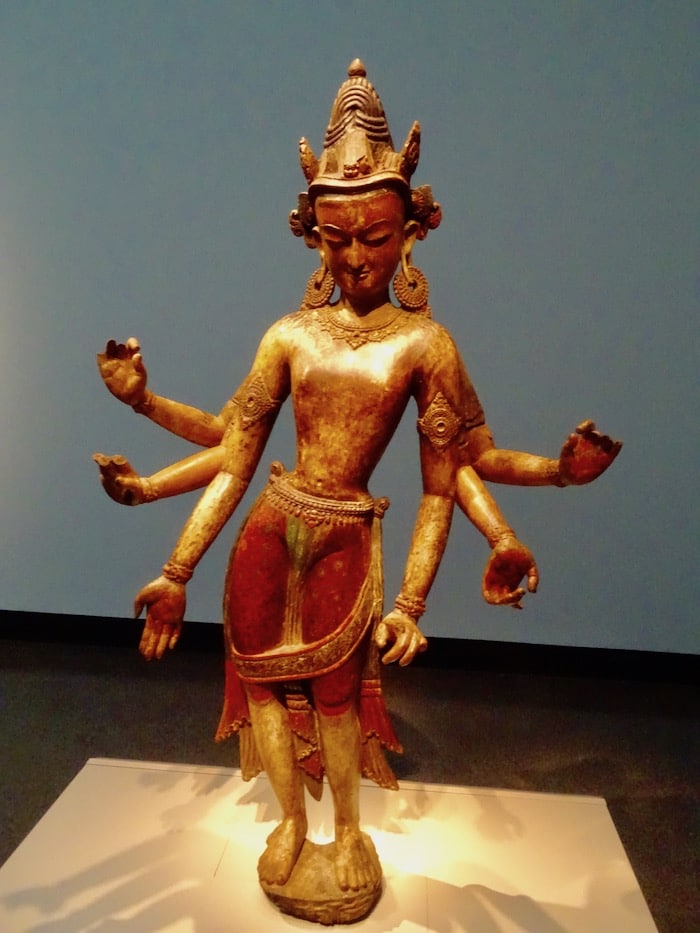


Arthur M. Sackler Gallery
Dr. Arthur M. Sackler was born in New York in 1913. In 1937 he graduated as a doctor with a specialty in research in psychiatry. He pioneered the study of chemical imbalances and mental illness. Until his death in 1987 he remained active in “Medical Tribune” the first newspaper for doctors that was founded by him. When he was in medical school he began to collect art, but it was not until 1950 when his preference turned to Asia. His interest was based on the origins of human creativity. He acquired jade and Chinese bronze, as well as ceramic and metalwork from the Near East. Interested in expanding his possessions across other cultures, he began to include antiques from East Asia, Southeast Asia, India and West Asia.

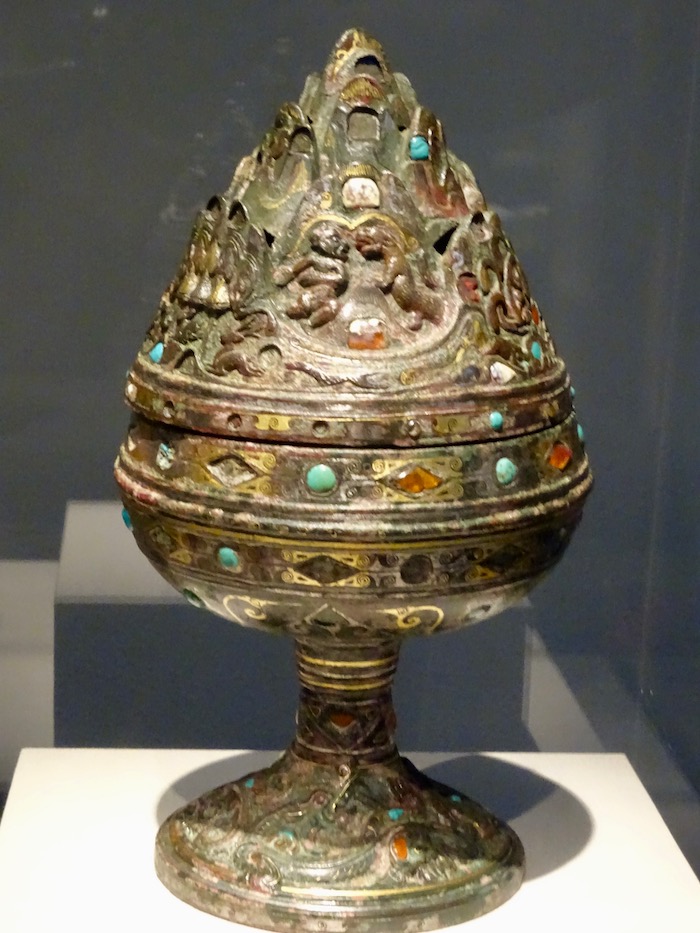


Masayoshi Ōhira, Prime Minister of Japan visited the Freer Art Gallery in 1979. He decided to donate $1 million to Smithsonian to build an annex to the gallery to exhibit more Asian art. That same year, the United States Senate approved Smithsonian’s petition of $500,000 to build museums to exhibit Asian and African art.
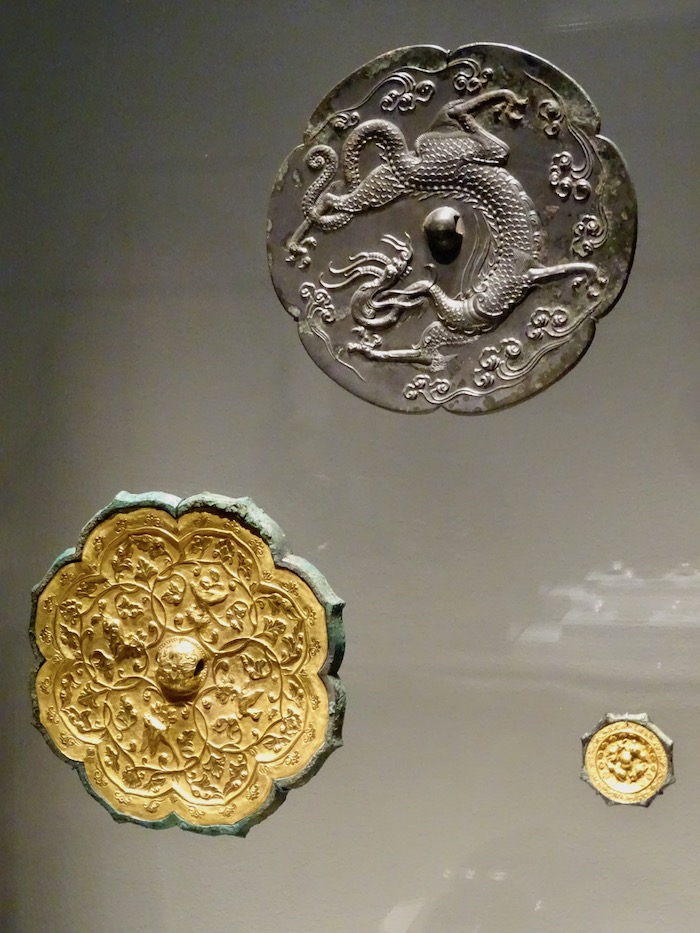

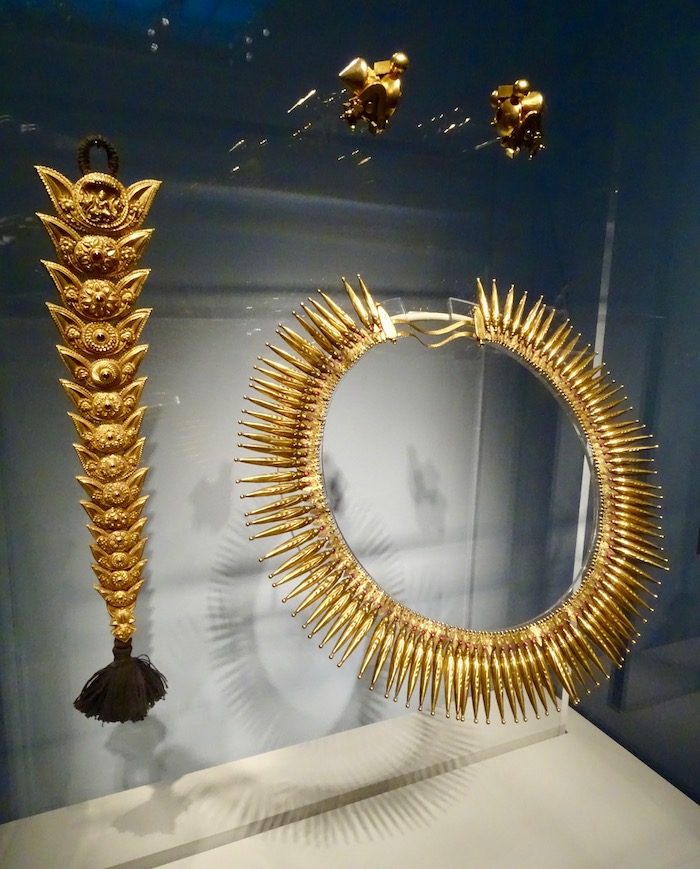

In 1982, Arthur M. Sackler donated a collection with 1,000 Asian pieces valued at $50 million. In addition to $4 million to build the building, which later needed an additional $36.5 million. The gallery opened on September 28, 1987, four months after Arthur M. Sackler died.


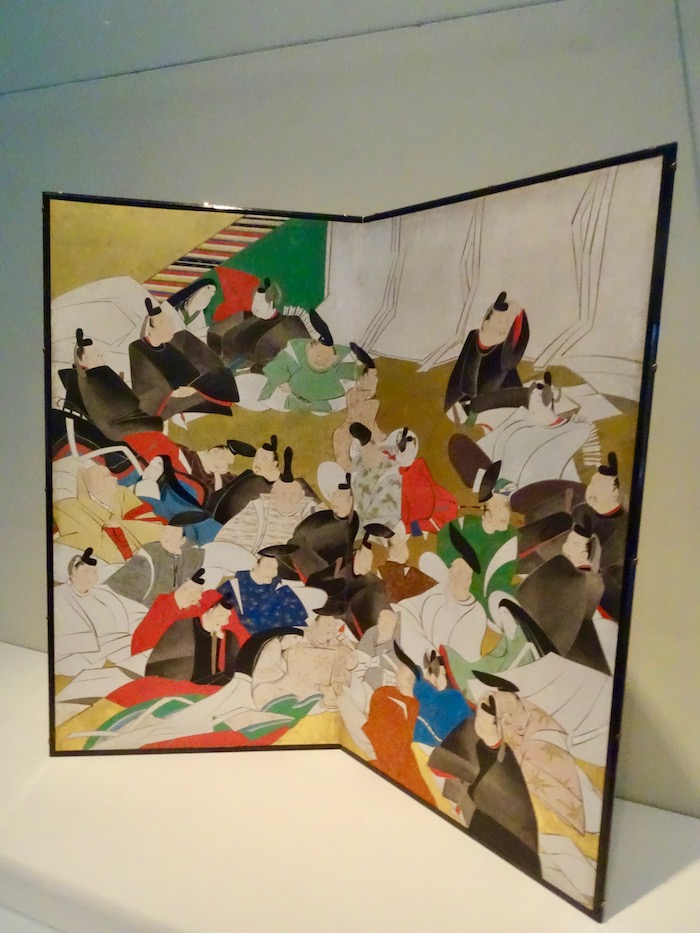
Controversy
Smithsonian released a press release in December 2019 saying that the Freer and Sackler Galleries would now be known as the National Museum of Asian Art. Supposedly, the brand change was to give emphasis to the collections. However, that same year the artist Nan Goldin organized a protest against the Sackler family in front of the Louvre museum in France. This family owns Purdue Pharma who invented the drug OxyContin. As it is highly addictive it has caused an opioid crisis in the United States.
Oregon Senator Jeff Merkley sent a letter to Smithsonian asking that the Sackler name be removed from the gallery. In 1952, Arthur along with his brothers Raymond and Mortimer, bought a small pharmaceutical focused on laxatives. That company became a pharmaceutical giant. Arthur M. Sackler sold his shares to his brothers before he died. And it wasn’t until 1996 that OxyContin was invented. But in 1997 Arthur M. Sackler was included in the hall of fame for his work in medical advertising.
Smithsonian have a legal commitment to the Sackler family, therefore, refused to remove the name of the gallery. Be sure to include a stop at the Freer and Sackler Galleries on your next trip to Washington D.C. If you do not plan to go to this city, you can also see more 11,000 objects from collections online.
